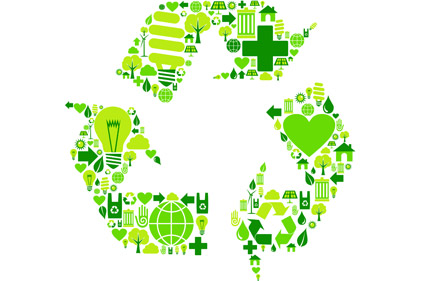However, the site includes an extensive life cycle assessment (LCA) download discussing steps the company has taken to become more sustainable when manufacturing some of the company’s most popular products.
An LCA is an attempt to measure a product’s environmental impact from cradle to grave. In essence, an LCA is an accounting tool used to compute the total environmental impacts of a product. The process includes measuring everything from the design and development of the product to the gathering of the necessary materials, the manufacturing of the product, its delivery to retailers, and eventually its recycling or disposal.
Specifically, the metrics that an LCA might track include the following:
- How much the manufacturing of the product contributes to climate change
- Energy needed to make the product
- Percent of that energy that is derived from renewable sources
- Amount of water used to make the product
- Recycled content in the product
- Waste generated
As an example, for a pair of 501® Original Levi’s, the LCA study prepared by the company indicates, among other metrics, that its global warming potential is 15 kilograms CO2-equivalents; the energy used in manufacturing equals 197 megajoules, of which 13 percent are from renewable sources; and recycled content amounts to one percent of the ingredients.
“It’s only a pair of jeans”
That might be more information than you need to select a pair of jeans, but LCAs are going to play a bigger role in products, buildings, and business operations in years to come. Using our pants example again, assuming two pairs of jeans cost about the same, look about the same, are equally durable, and will last about the same amount of time, if one is made with considerably more recycled content than the other and has less impact on the environment, a Green and sustainability-conscious end customer will likely prefer those because they have an overall reduced environmental impact.
Environmental product declaration (EPD)
In our Levi’s example, the LCA study was conducted by the manufacturer. And while it appears to be quite thorough, some end customers would prefer the LCA study be provided by an independent third party and not the manufacturer. They believe this provides an even greater degree of credibility and transparency.
That’s where an environmental product declaration (EPD) comes in. Essentially an EPD summarizes an LCA using third-party testing and analysis, possibly providing even more environmental information about the product. Further, the EPD is expected to become standardized, following a format similar to the nutrition label now found on food products. This will make it easier to understand.
Dashboards, LCAs, and EPDs
As we said, LCAs and EPDs are going to play a bigger role in building and business operations. Not only will this allow organizations to make Greener and more sustainable purchasing decisions, it can also help them achieve such things as LEED certification and meet the requirements of other vendors that are now making their suppliers meet specific environmental and sustainability criteria in their business operations. Further, because we are finding that becoming more sustainable can reduce operational costs, this may benefit an organization’s bottom line as well.
This is where sustainability dashboard systems come into the picture. Some of the dashboard systems now available are web-based, so there is no special or costly software to purchase. Further, because the system is online, the information is available to many users instead of just one or a few. Typically, dashboards monitor a facility’s use of energy, water, waste, consumables such as cleaning supplies, and other metrics. The information is fed into the system or downloaded from utility companies, as an example. Initially, a benchmark is established, and from here, the organization not only can monitor its resource consumption, it can look for ways to help reduce it.
With the help of these tools, we can take steps now to become more sustainable and minimize cost increases, all the while helping to protect the environment. In the not-too-distant future, the world is expected to reach a tipping point when certain natural resources will become even more costly and in shorter supply.


